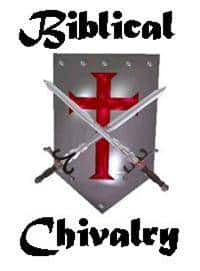This series of short lessons attempts to detail Jesus’ Roadmap for the Future. It starts with the last lessons Jesus gave the disciples on the Mount of Olives, and ends with teachings from the Apostle Paul about the Rapture.
As an introduction, the Olivet Discourse was aimed at the consequences of Israel’s rejection of Jesus as Messiah, and anticipated the destruction of the nation (70 A.D.) and the final Tribulation period. Remember that the Church Age is an intercalation—meaning an insertion, like a parenthesis, into the Age of Israel. This means that with the Rapture of the Church, the Tribulation picks up where 70 A.D. leaves off. This is why the Church Age is called a “mystery” (Rom. 11:25; 16:25; Eph. 3:1–13; Col. 1:26–27), which is a graduate course to “the principalities and powers in the heavenly places” (Eph. 3:10).
The Olivet Discourse reveals the consequences of Israel’s rejection of her Messiah (compare Matt. 23:37–39 and Rom. 9:1–5; 10:1–4; 11:25). These consequences are defined by Paul as “wrath … to the uttermost” (1 Thess. 2:15–16).
The outline is actually given by Jesus Himself, by using certain key words as markers of the divisions. Perhaps the most obvious of these words is “Then,” a time-word indicating a sequence of events. We find this in Matt. 24:1, 9, 11, 16, 21, 23, 29, 40; 25:1, 7, 16, 24, 34, 37, 41, 44, 45. With the exception of its use in Matt. 24:1, where it connects Jesus’ departure from the Temple with the following discourse, in all the subsequent times, it is used specifically to refer to the Tribulation period followed by His Second Coming. It is worth quoting Mark, here, for the statement he includes:
“For in those days there will be tribulation, such as has not been since the beginning of the creation which God created until this time, nor ever shall be.” Mark 13:19
In Matthew 24, Jesus gives us an outline, speaking of “tribulation” (Matt. 24:9), followed by “the abomination of desolation” (Matt. 24:15, see Dan. 11:31; 12:11), which is then followed by “great tribulation” (Matt. 24:21) and, finally, “after the tribulation of those days” (Matt. 24:29) by the return of Christ to Earth (Matt. 24:30–31). Although both Mark 13 and Luke 21 include portions of this message, only Matthew gives us such a clear picture of the chain of events.
Gene Cunningham - October 12, 2000
Biblical Chivalry #2

Act 13:22 Rebellion to proper authority is rebellion against GOD. David - a man after GOD’s heart. Eph 5:25-28 Goals for husbands. Starting point of loving your wife (as your own body): feed, protect, adorn, stimulate (mental, physical, and soul), and rest. David is a role model for men. The difference between David and others is David was always aiming for the goal. That goal is GOD’s idea of a man. Our manners should always pass inspection as if we were in a king’s court. During the barbarism of Feudalism from 600-1100 a.d., the idea of Chivalry resulted from a small group of knights who studied scripture. Chivalry is a code of conduct. Biblical chivalry is a code of character, a study for battle, a guide for romance. 1Ch 16:13-14 vigilance, stand firm, be a man, be strong, love. Gen 5:6 man after the fall. 1Pe 2:7 men should be warrior heroes, a protector of a wife’s soul. Adam had a message to tell, a world to tend, an enemy to conquer. A man is prophet, priest, kingship, and warrior. Gen 3:14 3 arenas: world, home (Gen 4:7), and inner life. Act 13:22 a man is responsible. 1Ki 2:1-46 biblical character, man in relationship, man in battle.
Scripture References: Ephesians 5:25-28, Acts 13:22, Genesis 4:7, Acts 13:22, Genesis 3:14, Genesis 5:6



